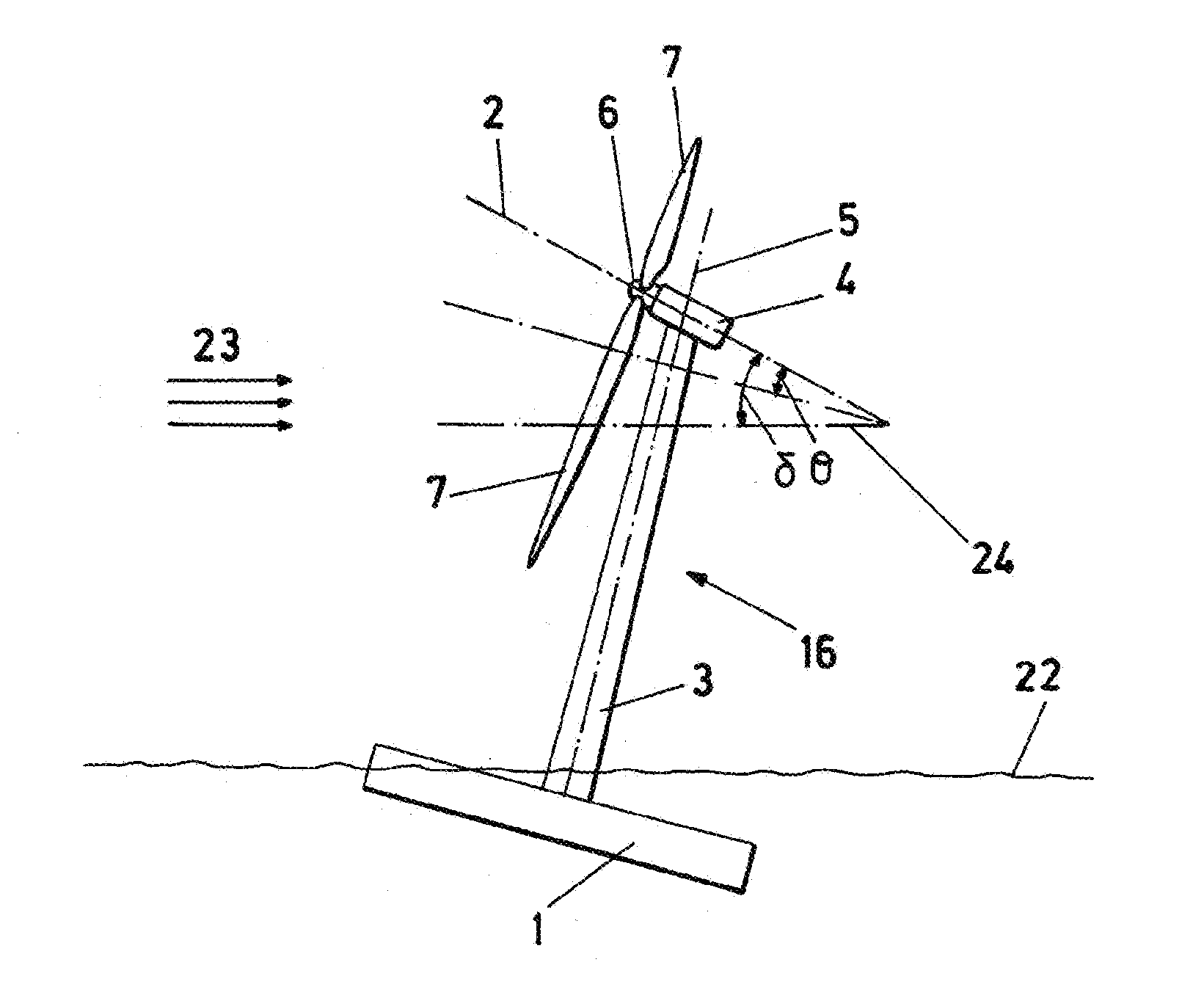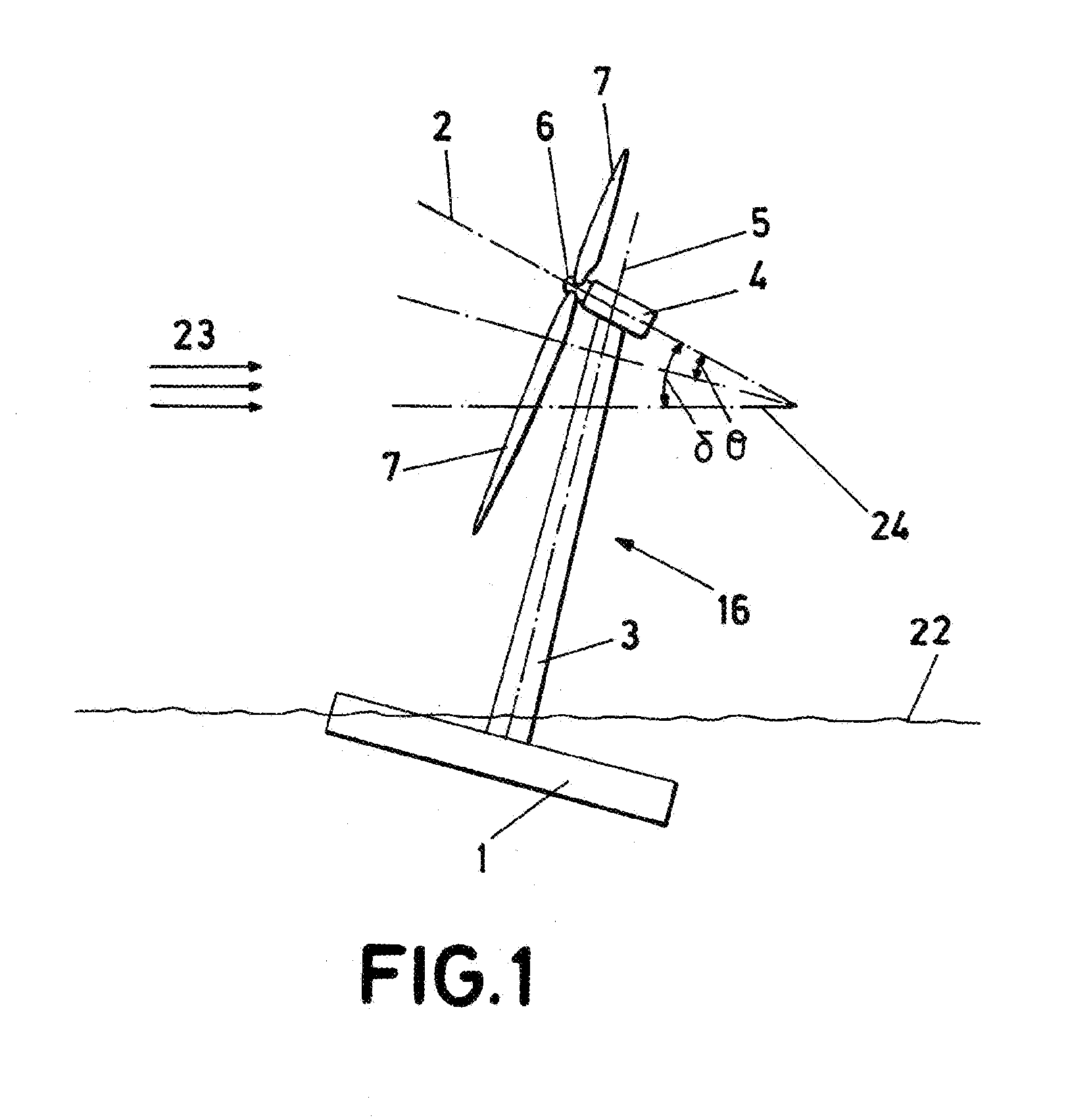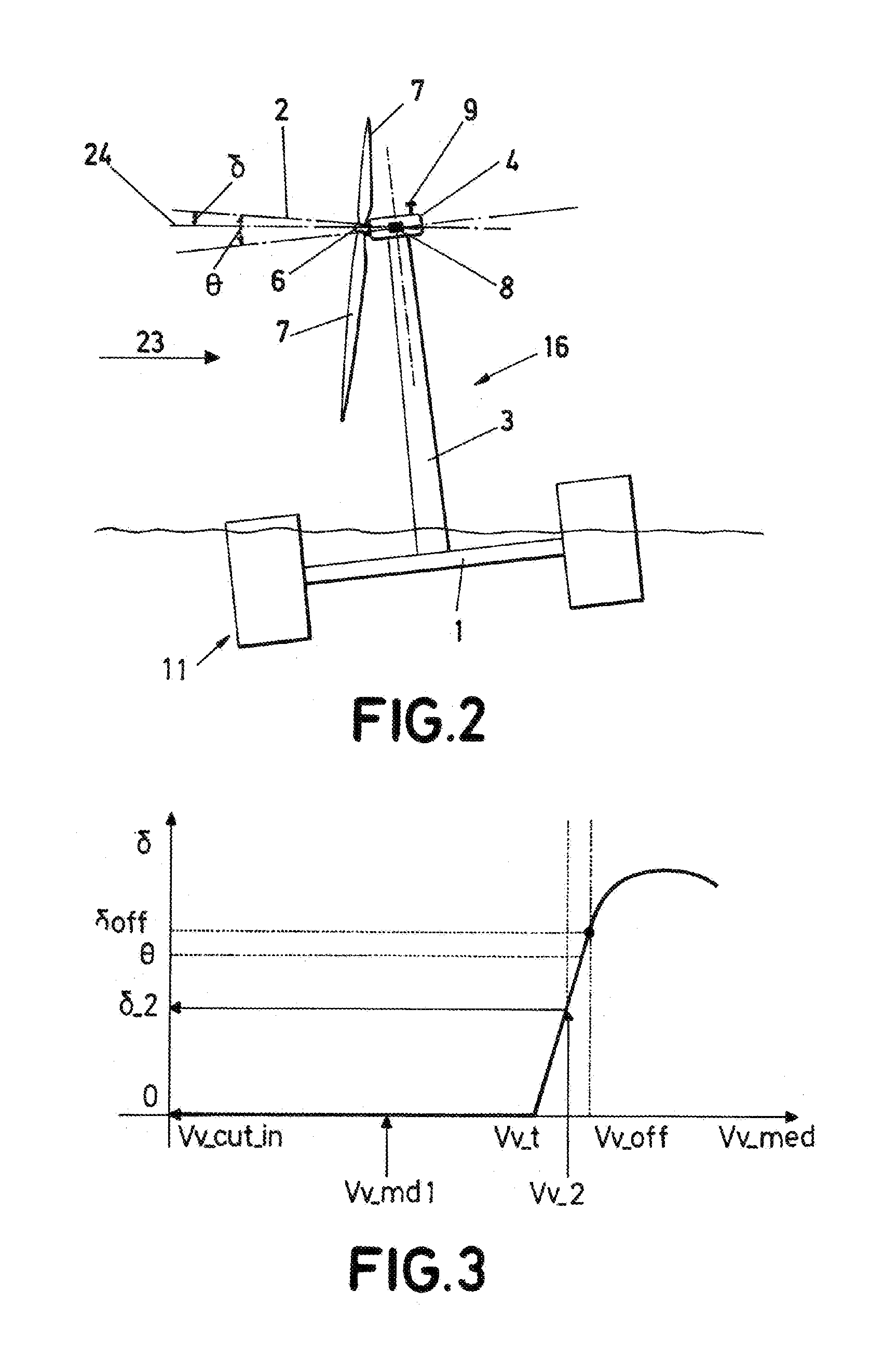Wind turbine - floating platform assembly and method for orienting said assembly description
a technology of floating platforms and wind turbines, which is applied in the direction of engine control parameters, self-bailing equipment/scuppers, buoyancy control, etc., can solve the problems of increasing the weight of the blades and the tower, and increasing the weight of the rotor
- Summary
- Abstract
- Description
- Claims
- Application Information
AI Technical Summary
Benefits of technology
Problems solved by technology
Method used
Image
Examples
first embodiment
[0046]FIG. 5.—Shows a view of the orientation means according to the
[0047]FIG. 6.—Shows a schematic view of the operation of the method according to a preferred embodiment.
PREFERRED EMBODIMENTS OF THE INVENTION
[0048]The wind turbine (16)—floating platform (1) assembly in accordance with the invention shown in FIG. 2 comprises an upwind-type wind turbine (16) disposed on a floating platform (1), where the wind turbine comprises:[0049]a tower (3) fixed to the platform (1);[0050]a nacelle (4) disposed on the tower (3) for supporting a rotor (6), and having a yaw mechanism (not shown) to orient the rotor (6) windward, said yaw mechanism enabling the nacelle (4) to rotate with respect to the tower (3) around the longitudinal axis of said tower (3); the rotor (6) comprising at least two blades (7) capable of making the rotor (6) rotate around a rotation axis (2) due to the action of the wind incident upon said blades (7), the rotation axis (2) having a tilt angle (θ), formed between the r...
second embodiment
[0066]In accordance with a second embodiment, the method of the invention comprises the additional steps of:[0067]capturing a third input (15) by means of the third sensors (10);[0068]communicating said third input (15) to the control unit (12); and[0069]comparing the value of the third input (15) to the previously defined threshold value and, when the condition that the value of the third input (15) does not exceed the threshold value is fulfilled, ordering the orientation means to orient the platform in accordance with the first input (13), the second input (14) and the third input (15).
[0070]In a third preferred embodiment of the invention, a third input signal is used for controlling leaning, said signal being selected from among the following: wind speed, rotor rotation speed, electricity generated or blade pitch angle.
[0071]Control of the angle of blade pitch towards feathered position to control rotor rotation speed within the rated wind range is typical in wind turbines. The...
PUM
 Login to View More
Login to View More Abstract
Description
Claims
Application Information
 Login to View More
Login to View More - R&D
- Intellectual Property
- Life Sciences
- Materials
- Tech Scout
- Unparalleled Data Quality
- Higher Quality Content
- 60% Fewer Hallucinations
Browse by: Latest US Patents, China's latest patents, Technical Efficacy Thesaurus, Application Domain, Technology Topic, Popular Technical Reports.
© 2025 PatSnap. All rights reserved.Legal|Privacy policy|Modern Slavery Act Transparency Statement|Sitemap|About US| Contact US: help@patsnap.com



